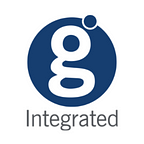2021 payments landscape recap
The payments industry is fast-moving and ever-changing. At the end of 2020, we posted a blog about 5 Payments Trends to Look for in 2021. As we’re now nearing the end of 2021, we thought we’d revisit that piece and take a look at how well those trends caught on — or didn’t — during this year.
Contactless payments
Contactless payments were initially slow to catch on in the United States, but the pandemic quickly accelerated their use. Now, contactless payments are likely here to stay, as evidenced by their rapid and continual growth. Research from Raydiant found that a vast majority of survey respondents — 83.1% — had used contactless payments within the past year.
In fact, shoppers cite contactless payments as a major factor in choosing where to shop — 57% of consumers say they’re more likely to do business with retailers who offer contactless payment functionality.
This rise in usage translates to large revenue numbers. According to ResearchDive, the global contactless payment market is predicted to generate revenue of $20,340.3 million at a compound annual growth rate (CAGR) of 11.2% during the forecast period of 2019–2026.
For additional reading on contactless payments, here’s a selection of related blog entries to visit.
Alternative financing/”buy now pay later”
Alternative financing methods such as “buy now pay later” (BNPL) also caught on in a big way this year. Accenture found that, compared to January 2020, BNPL spending had increased a massive 230% by June 2021. Consumers are expected to make nearly $100 billion in retail purchases using BNPL in 2021.
As BNPL provides consumers with additional flexibility, allowing them to purchase an item and then pay for it in installments, it’s likely to see continued growth. Accenture projects that BNPL could account for more than 10% of US retail spending by 2024.
For more information on alternative financing and buy now pay later, visit these blog entries:
Biometrics
Biometric authentication is the use of a person’s characteristics, such as their fingerprints or a retinal scan, to identify individuals and validate their identity.
Worldwide, the use of biometric authentication in payments is growing. Biometric Update predicts that the use of biometric data in mobile commerce, app-based purchase, and mobile device payments will become a market worth $3 trillion by 2025.
While the use of biometric authentication is seeing growth overall, it has not yet become a widely-used part of the payments ecosystem in the United States. Consumers cite privacy concerns as one of their top reasons for being hesitant to use the technology. In ecommerce, 41% of surveyed consumers were also concerned about the security of digital accounts that use biometric information.
Ecommerce
Customers want easy and convenient purchasing experiences, so it’s no surprise that the growth increase in ecommerce in 2020 continued into 2021. A July report from Insider Intelligence and eMarketer noted that US consumers will spend $933.30 billion on ecommerce in 2021 — up 17.9% year-over-year.
Further, the report predicts that ecommerce sales will continue to grow, accounting for 23.6% of total retail sales by 2025 (versus 11.0% in 2019).
Frictionless commerce
Customers are increasingly using multiple channels to make a purchase. For example, a consumer may see an item advertised on social media, then visit the website for more information and to check the inventory at their local store, then finally making an in-store visit to purchase the item.
A unified commerce platform connects all of a business’s channels, enabling the business to have accurate and consistent data across all its channels and systems. In the scenario above, the item inventory the customer sees on the website will be accurate when they arrive at the store, helping to ensure a frictionless consumer experience.
Customers are now expecting this seamless experience — 77% say they’re more likely to buy from brands that demonstrate a consistent experience across customer touchpoints.
This approach benefits retailers’ bottom lines as well — research shows that companies with unified commerce were 600% more likely to see higher revenue than their peers during the pandemic.
Conclusion
Payments is a fast-paced industry. We’ll keep you updated with the latest news. Subscribe to our blog and follow us on social media as we see what’s to come in 2022!
Originally published at https://www.globalpaymentsintegrated.com.
